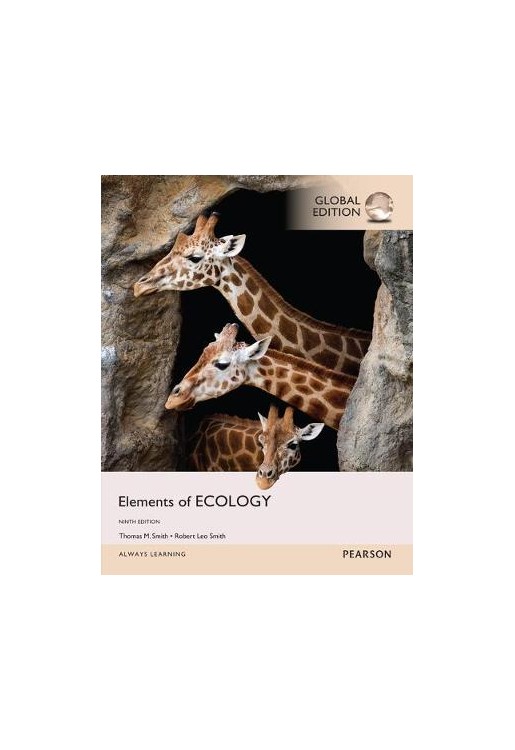


This package includes MasteringBiology®.
Elements of Ecology, Ninth Edition continues to explain ecological processes clearly and concisely, with a greater emphasis on the relevance of ecology to everyday life and the human impact on ecosystems. This dramatically revised edition discusses issues of human ecology throughout the text and provides a greater variety of opportunities for students to learn, practice, and develop quantitative and analytical skills. Current research examples and other content updates are supported by more than 200 redesigned, full-color illustrations, graphs, and tables.
With Elements of Ecology, Ninth Edition you can:
â—Ź Help Students Interpret and Analyze Ecology Data: New and expanded in-text instruction and practice is provided in Interpreting Ecological Data figure questions, in-depth Quantifying Ecology boxes, and Analyzing Ecological Data case studies. Many are expanded and assignable in MasteringBiology.
● Keep Your Course Current and Relevant while also keeping students focused on learning essential concepts: With updated “Field Studies” and research references throughout, the Ninth Edition also provides a streamlined discussion on metapopulations and integrates human ecology concepts into all chapters.
â—Ź Personalize Learning with MasteringBiology: MasteringBiology improves results by helping students quickly master ecology concepts both in and outside the classroom.
This package includes MasteringBiology, an online homework, tutorial, and assessment program designed to work with this text to personalize learning and improve results. With a wide range of interactive, engaging, and assignable activities, students are encouraged to actively learn and retain tough course concepts.
Mastering is not a self-paced technology and should only be purchased when required by an instructor. Please be sure you have the correct ISBN and Course ID. Instructors, contact your Pearson representative for more information.
Chapter 1: The Nature of Ecology
Chapter 2: Climate
Chapter 3: The Aquatic Environment
Chapter 4: The Terrestrial Environment
Chapter 5: Adaptation and Natural Selection
Chapter 6: Plant Adaptations to the Environment
Chapter 7: Animal Adaptations to the Environment
Chapter 8: Properties of Populations
Chapter 9: Population Growth
Chapter 10: Life History
Chapter 11: Intraspecific Population Regulation
Chapter 12: Species Interactions, Population Dynamics, and Natural Selection
Chapter 13: Interspecific Competition
Chapter 14: Predation
Chapter 15: Parasitism and Mutualism
Chapter 16: Community Structure
Chapter 17: Factors Influencing the Structure of Communities
Chapter 18: Community Dynamics
Chapter 19: Landscape Dynamics
Chapter 20: Ecosystem Energetics
Chapter 21: Decomposition and Nutrient Cycling
Chapter 22: Biogeochemical Cycles
Chapter 23: Terrestrial Ecosystems
Chapter 24: Aquatic Ecosystems
Chapter 25: Coastal and Wetland Ecosystems
Chapter 26: Large-Scale Patterns of Biological Diversity
Chapter 27: Global Climate Change